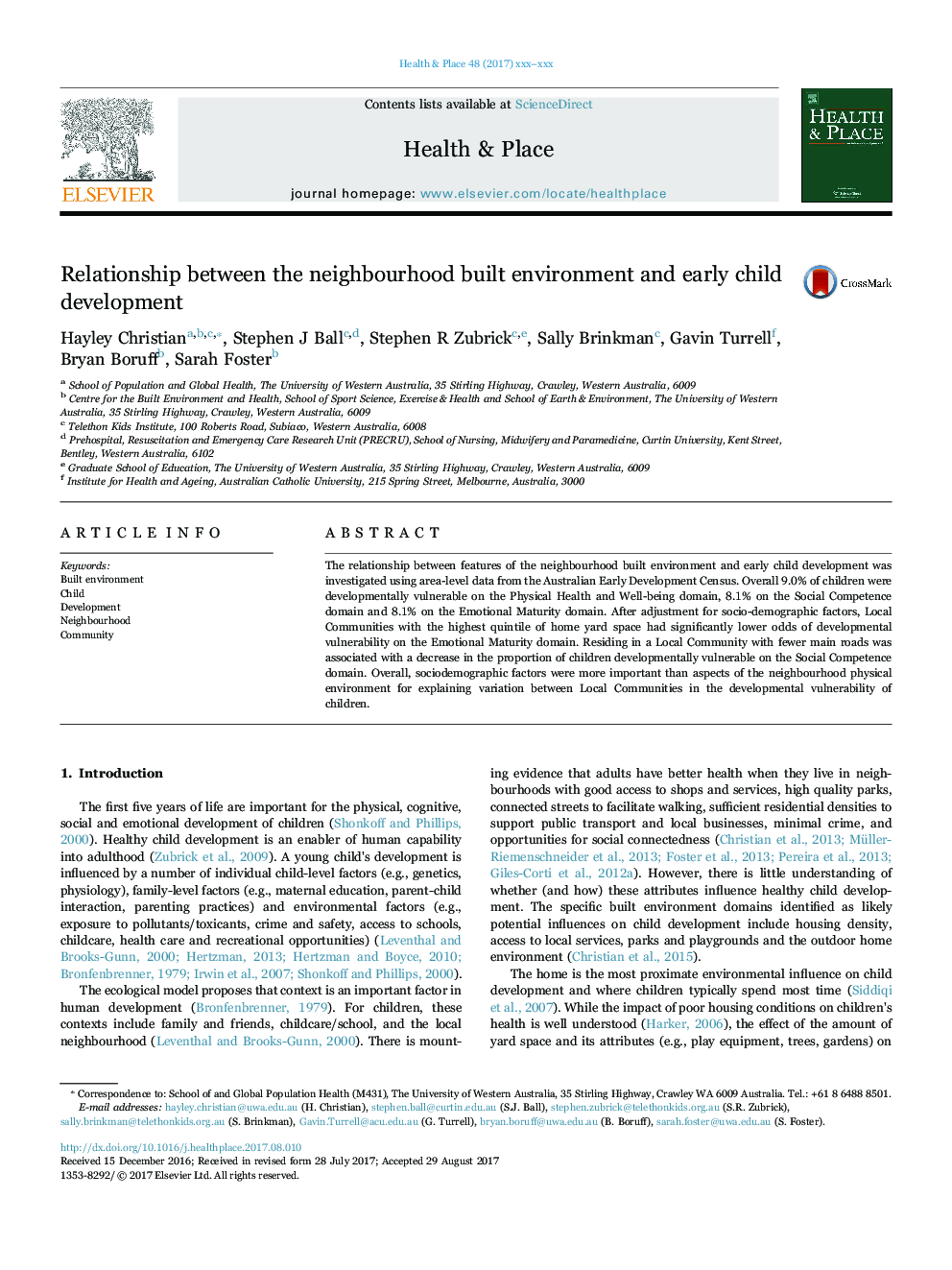| Article ID | Journal | Published Year | Pages | File Type |
|---|---|---|---|---|
| 5114745 | Health & Place | 2017 | 12 Pages |
Abstract
The relationship between features of the neighbourhood built environment and early child development was investigated using area-level data from the Australian Early Development Census. Overall 9.0% of children were developmentally vulnerable on the Physical Health and Well-being domain, 8.1% on the Social Competence domain and 8.1% on the Emotional Maturity domain. After adjustment for socio-demographic factors, Local Communities with the highest quintile of home yard space had significantly lower odds of developmental vulnerability on the Emotional Maturity domain. Residing in a Local Community with fewer main roads was associated with a decrease in the proportion of children developmentally vulnerable on the Social Competence domain. Overall, sociodemographic factors were more important than aspects of the neighbourhood physical environment for explaining variation between Local Communities in the developmental vulnerability of children.
Related Topics
Health Sciences
Medicine and Dentistry
Public Health and Health Policy
Authors
Hayley Christian, Stephen J Ball, Stephen R Zubrick, Sally Brinkman, Gavin Turrell, Bryan Boruff, Sarah Foster,
